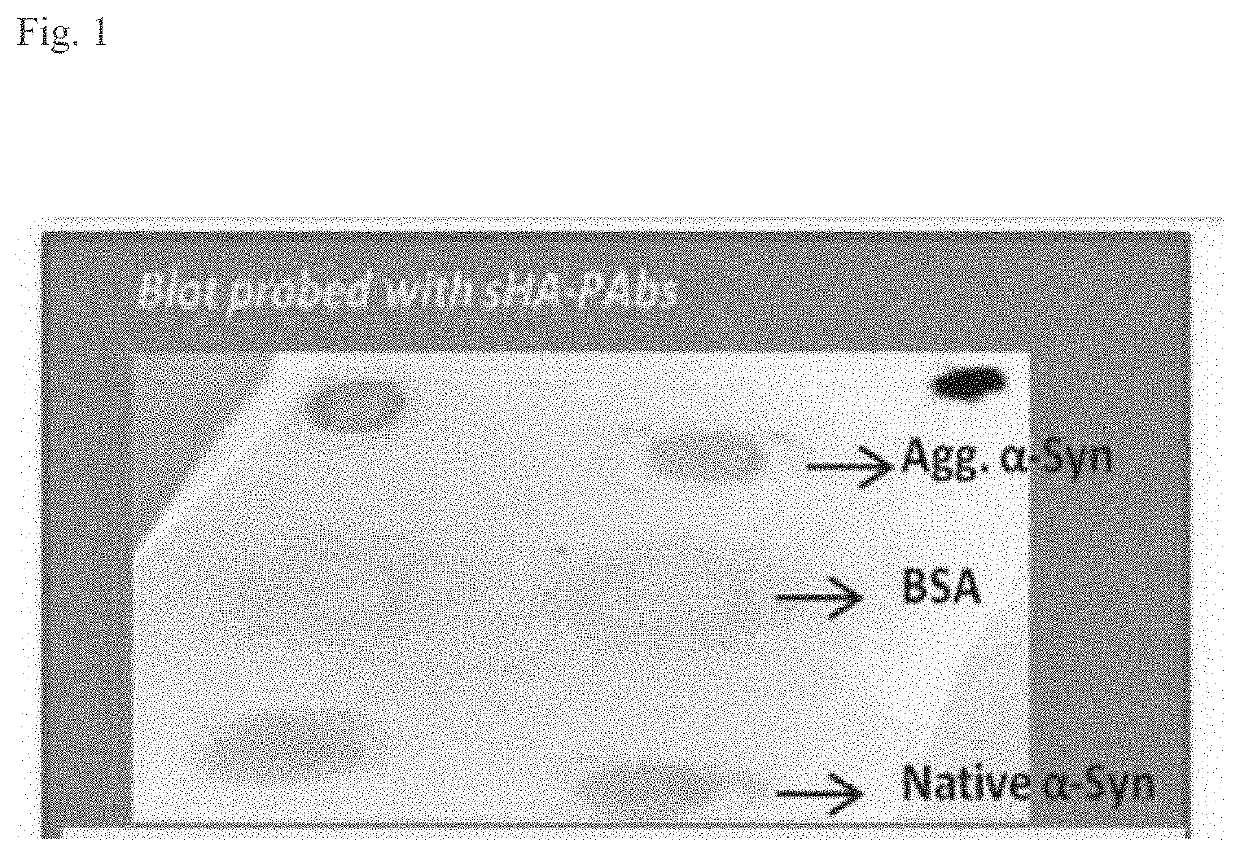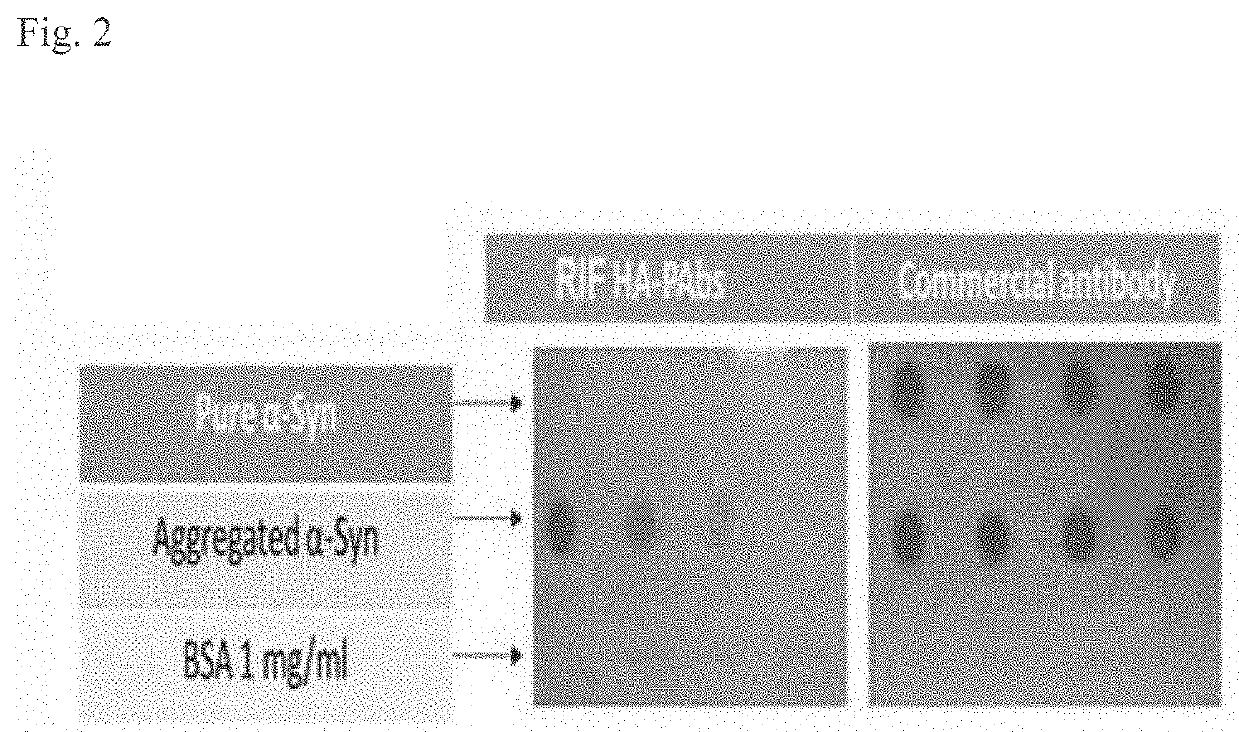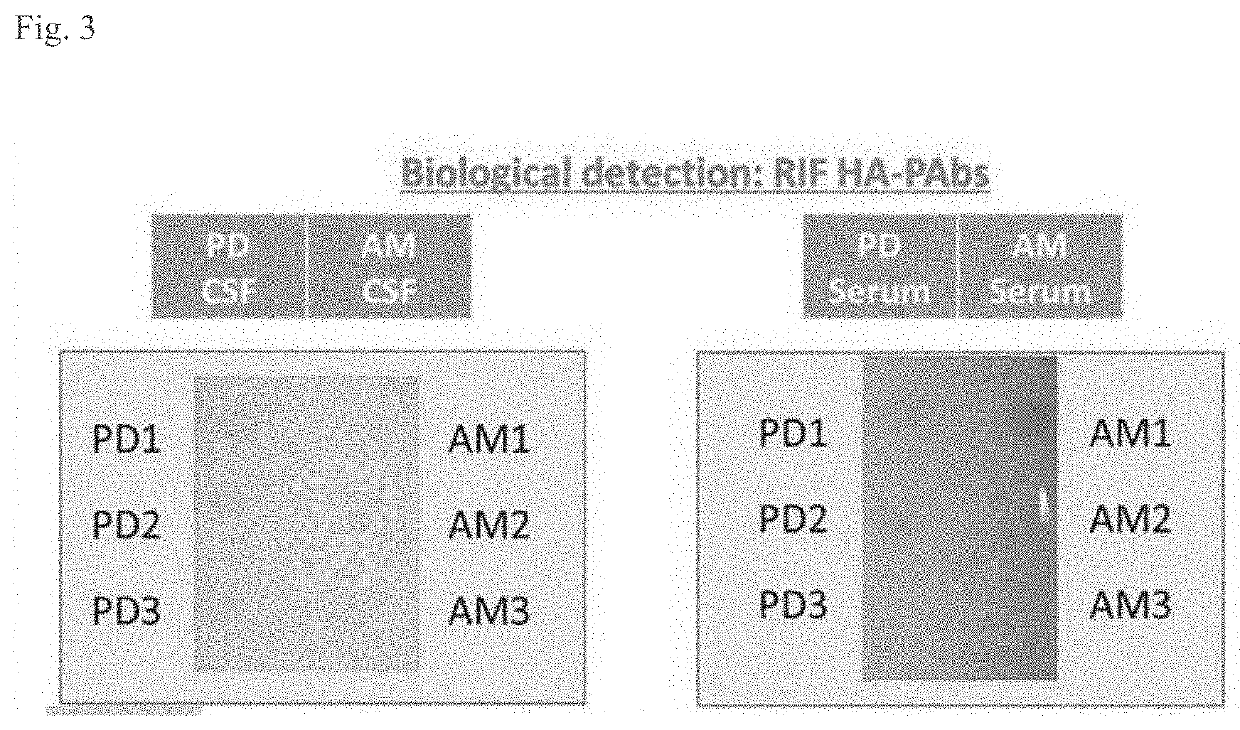Nano-theranostics for parkinson's disease
- Summary
- Abstract
- Description
- Claims
- Application Information
AI Technical Summary
Benefits of technology
Problems solved by technology
Method used
Image
Examples
example 1
[0211]In order to generate antibodies specific to the toxic aggregates of human αSyn, both polyclonal and monoclonal antibodies were generated. The polyclonal antibodies were generated by first aggregating native human αSyn in vitro and then using the aggregates to immunize mice. The mice were injected with a primary injection followed by three booster doses admixed with an alum adjuvant. Mouse sera was then selectively enriched for the HA-PAbs through the depletion of antibodies which bound to targets other than the aggregated human αSyn. The monoclonal antibodies were generated using murine hybridomas created by the fusion of murine splenic plasma cells with myeloma cells.
[0212]The HA-PAbs were screen by exposing them to epitopes unique to native αSyn, epitopes common to αSyn and βSyn, and epitopes shared between native αSyn and toxic αSyn. As shown by the different intensities in FIG. 1, the toxic aggregated αSyn has unique epitopes that are absent in the physiological monomeric ...
example 2
[0215]To show that the HM-PAbs of Example 1 can discriminate between subjects with Parkinson's disease (PD) and subjects which were age matched (AM) an immunoblot comparison was carried out. Serum and cerebral spinal fluid (CSF) samples were taken from both PD patients and AM subjects. The protein was then extracted from all the samples and using an immunoblot with HM-PAbs as the primary antibody, it was shown that the antibodies could detect the aggregate form in both the CSF and sera of the subjects (see FIG. 3).
[0216]Additionally, the HM-PAbs showed that PD patients contained a higher amount of aggregate αSyn in their CSF for every comparison with AM subjects (see FIG. 3). This discriminatory ability of the HM-PAbs may be used as an early detection test for aiding in the diagnostic of subjects for αSyn aggregate diseases, such as PD, LB dementia, and other synucleoinopathies.
[0217]Therefore, it is possible to specifically detect aggregate αSyn in both the CSF and sera of subjects...
example 3
[0218]The aggregate specific HM-MAbs of Example 1 also show an ability to discriminate between patients with PD and AM subjects. Sera samples were taken from patients with PD and AM subjects and the protein isolated in order to determine if the HM-MAbs could detect aggregate αSyn in a subject's sample. As shown in FIG. 4, the HM-MAbs were able to detect aggregate αSyn in the sera of both patients with PD and AM subjects.
[0219]To show that the HM-MAbs have diagnostics ability, an indirect, competitive semi-quantitative Enzyme Immuno Assay (EIA) was developed. To first show the ability of the EIA to distinguish between aggregate and monomeric forms of αSyn, aggregate EIA was immobilized to the EIA plate and then either the monomer or aggregate αSyn was added as a free analyte to compete for the primary antibody. The IgM HM-MAbs from hybridoma strain 3A8 was then added to each well and allowed to bind with the immobilized aggregate αSyn or to the free analyte. The EIA plate was then wa...
PUM
| Property | Measurement | Unit |
|---|---|---|
| Fraction | aaaaa | aaaaa |
| Reactivity | aaaaa | aaaaa |
| Fluorescence | aaaaa | aaaaa |
Abstract
Description
Claims
Application Information
 Login to View More
Login to View More - R&D
- Intellectual Property
- Life Sciences
- Materials
- Tech Scout
- Unparalleled Data Quality
- Higher Quality Content
- 60% Fewer Hallucinations
Browse by: Latest US Patents, China's latest patents, Technical Efficacy Thesaurus, Application Domain, Technology Topic, Popular Technical Reports.
© 2025 PatSnap. All rights reserved.Legal|Privacy policy|Modern Slavery Act Transparency Statement|Sitemap|About US| Contact US: help@patsnap.com



